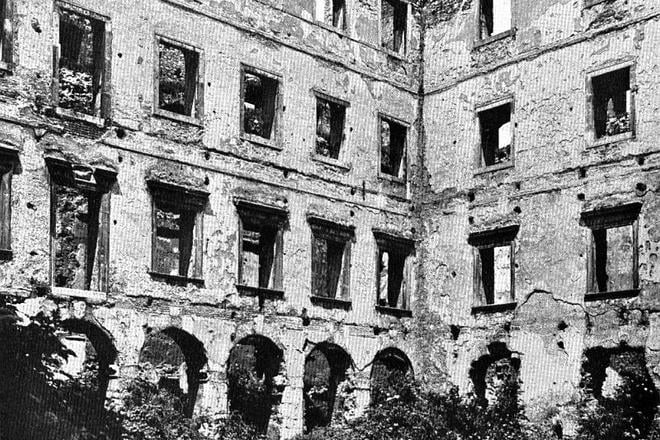ABOUT 200 years ago, on May 28, 1811, a huge fire raged through Bratislava Castle, destroying the main palace, the adjacent building of the New Palace (Theresianum) and more than 70 nearby houses. It is thought that the devastating fire was caused by careless soldiers in one of the outbuildings. Based on reports in the Pressburger Zeitung newspaper from May 31, 1811, the fire lasted for three days, killed nine people and left more than 100 families homeless.
After the fire, no interest was shown in the ruins and the owners took from the castle everything of remaining value. The dilapidated walls of the castle were sold by the military administration as construction material. Two years before the fire, Napoleon had visited French soldiers at the castle – but it was kept secret and only the head of the castle garrison knew about it.
Prince Albert Casimir August of Saxony married the daughter of Maria Theresa of Austria in 1766 and became the vice-regent of Bratislava, the TASR newswire wrote. Maria Theresa had the castle rebuilt for her daughter, Maria Cristina, and the prince as well as building a more comfortable palace, called Theresianum. Here, the huge collection of artworks amassed by Prince Albert was first launched; today it is housed in Vienna’s Albertina.
By the second half of the 18th century the future capital of Slovakia had reached its social and economic peak. When Maria Theresa died in 1780, the new emperor, her son Joseph II, speedily implemented the so-called Enlightenment reforms after which Bratislava, then called Pressburg or Pozsony, became a poor provincial town – to such an extent that it was exempted from paying taxes. Prince Albert and his wife left Bratislava and a seminary was founded in the Theresianum, later followed by a military garrison.
During reconstruction of Bratislava Castle in 2009, its façade regained the original white colour it had during the reign of Maria Theresa.
The 200th anniversary of the fire was commemorated this May by an exposition called The Testimony of Time (Svedectvo času) assembled from both the most recent as well as the older findings and artefacts from this national heritage site. The organisers of the remembrance also simulated a fire in the area of Podhradie (Under the Castle) in front of the Archaeology Museum on Žižkova Street.


 Bratislava Castle, after the fire. (source: Courtesy of SNM)
Bratislava Castle, after the fire. (source: Courtesy of SNM)